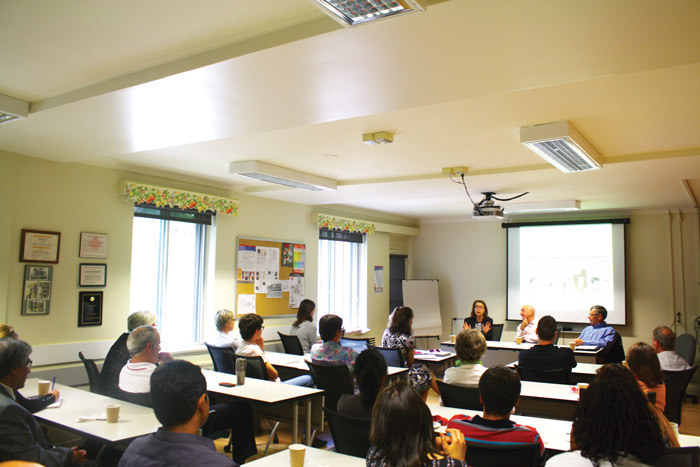Last Wednesday, a panel of professors and faculty members led a discussion on McGill’s responsibilities with regards to safety on campus.
Ruthanne Huising, an assistant professor in the Desautels Faculty of Management, is currently studing safety regulations and said that academic labs face difficulties in regulation, as they have a different dynamic than regulated industries. However, according to Huising, there is room for regulatory changes to be made.
“These labs can become governable,” she said. “The change we observe is to make people feel an internal responsibility, and the people who do best at this are the people who don’t just look at their job as narrowly defined. It’s the people who see how they fit into the entire organization.”
Another panelist, Dr. Alvin Shrier, a physiology professor and chair of the University Health and Safety Committee (UHSC), described how guidelines at McGill laboratories have changed over time. Originally, lab workers did not have strict guidelines on how to protect themselves in the lab, and were permitted to wear open-toed shoes and shorts.
“I realized what I wasn’t doing and it really shook me up,” Shrier said. “I came up-to-speed, and now I make sure everyone gets all the training, whether they are an undergraduate or a graduate student. When you become part of the system and realize how important it is, you can change. I can attest to that.”
He referenced to a University of California, Los Angeles (UCLA) incident in 2008, in which a fire caused by chemicals killed a lab assistant who was not wearing the proper lab equipment.
The event facilitated discussion as some members of the audience made suggestions for what they viewed as room for strengthening regulations which were received well.
Isabelle Gamache, representing the Association of McGill University Research Employees (AMURE), expressed that she did not believe that the university’s internal responsibility is being completely fulfilled. She cited an incident when she was approached by a student who refused to wear a lab coat.
“Are we there yet in terms of safety culture?” she said. “Some people are. But something else has to happen so that I have the authority to refuse to let [students] work until they follow procedures.”
The event was one of many held during Safety Week, which ran from Sept. 8 to 12. The events were centred around the concern of laboratory and research safety on campus.
“Safety is something people think about after a major accident has occurred, but not the rest of the time,” Associate Director of University Safety Wayne Wood said.
He emphasized the importance of safety events in preventing accidents.
“The main purpose of Safety Week is not to wait for a disaster, but instead draw attention to safety at the beginning of the academic year when most people’s minds are on everything else,” Wood said.








